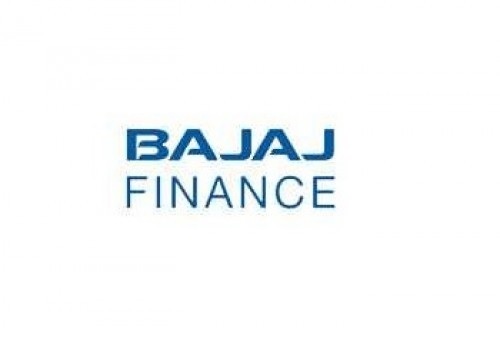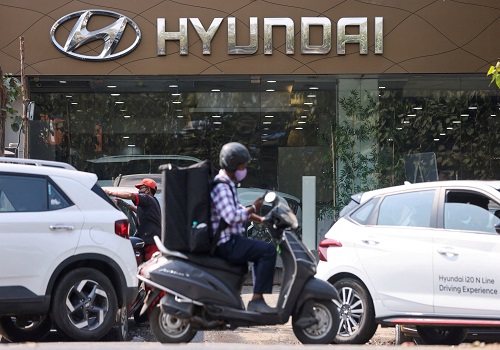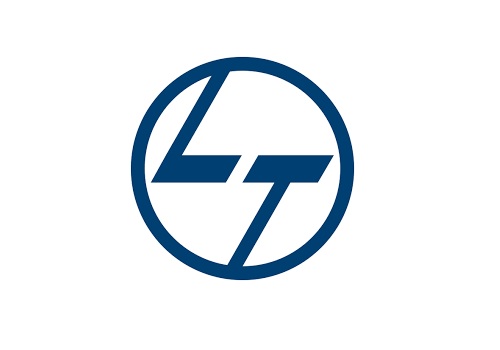`Look through earnings` of NIFTY50 benchmarked portfolios to be driven by cyclicals and select defensives - ICICI Securities

Follow us Now on Telegram ! Get daily 10 - 12 important updates on Business, Finance and Investment. Join our Telegram Channel
https://t.me/InvestmentGuruIndiacom
Download Telegram App before Joining the Channel
‘Look through earnings’ of NIFTY50 benchmarked portfolios to be driven by cyclicals and select defensives, warrants OW stance
"The goal of each investor should be to create a portfolio (in effect, a "company") that will deliver him or her, the highest possible look-through earnings..." – Warren Buffet's Letter to shareholders, 1991
* NIFTY50 ETFs with a combined AUM of ~US$17bn currently have a ‘look through’ earnings collectively of ~US$632mn. According to Warren Buffet, for calculating their look through earnings, investors should determine the underlying earnings attributable to the shares they hold in their portfolio and total these (Warren Buffet's Letter to shareholders, 1991). Analogy for ‘look through earnings’ from an equity fund’s perspective with holdings of let’s say 50 stocks would be to imagine a conglomerate company with 50 subsidiaries, which get consolidated at the end of each financial year proportionate to their minority holding in each company.
* On an average, the size of a typical large mutual fund scheme benchmarked to the NIFTY50 currently is about US$3bn which implies that the fund generated ‘look through earnings’ of US$111mn in FY21 assuming no deviation from NIFTY50 weights. Of the above, US$82.4mn is contributed by cyclicals and capex driven defensives (utilities and telecom).
* Going by consensus estimates, the ‘look through earnings’ for a typical US$3bn NIFTY50 fund is likely to expand by US$59mn by FY23 to reach US$171mn (CAGR of 24%). Out of the incremental US$59mn earnings, 85% is contributed by cyclicals (Capex driven Industrials, Lenders and discretionary consumption), utilities and telecom, compared to their weight of 68.2% in the NIFTY50 portfolio.
* Strategy: From a smart-beta perspective, adjusting fund holdings relative to benchmark which result in improved look through earnings growth prospects appears logical for outperformance.
* The above can be achieved by buying stocks with higher-than-average earnings growth prospects (largely cyclicals) at the cost of stocks with below average earnings growth (largely defensives) assuming no valuation re-rating/de-rating.
* If higher growth for cyclicals start getting priced at higher valuations, then it can add another layer of outperformance. We have seen signs of value (typically cyclicals) outperforming growth and low volatility (typically defensives) since Oct’20 both in Indian equity markets as well as globally (MSCI value outperforming growth)
* Valuations of defensives (largely Consumer & IT) are at historical peak levels and further valuation re-rating appears unlikely and only high look through earnings contributions can result in outperformance.
* Our top picks within the Nifty50 index include SBI, Axis Bank, Ultratech, L&T, BPCL, Tata Motors, Bajaj Auto, NTPC, Tata Consumer, Divi’s Lab, SBI Life
* Managing risk is the key, as chasing higher return (higher yield and higher growth) will add higher risk to portfolio: Although not always, we believe, markets are largely efficient especially in the large cap space and hence, aiming for higher than average returns by buying higher yielding assets with higher growth prospects than the benchmark would entail higher risk which is obvious in this case as cyclicals are typically more leveraged and significantly exposed to the vagaries of economic cycles. Hence, buying in cyclicals should be restricted to stocks which are able to manage and improve risk factors, such as reduction in leverage, improving cash flow generation, favourably placed in business/economic cycle and volatility in earnings.
* History of past two decades indicates trend in ‘look through earnings’ trumps the risk logic. From 2010-2020 adding lower risk (defensives) resulted in higher returns (counter-intuitive) as ‘look through earnings’ of defensives beat cyclicals. Similarly, adding higher risk (cyclicals) than the benchmark from 2003-2010 resulted in outperformance as their look through earnings beat defensives by a wide margin.
To Read Complete Report & Disclaimer Click Here
For More ICICI Securities Disclaimer https://www.icicisecurities.com/AboutUs.aspx?About=7
Above views are of the author and not of the website kindly read disclaimer























